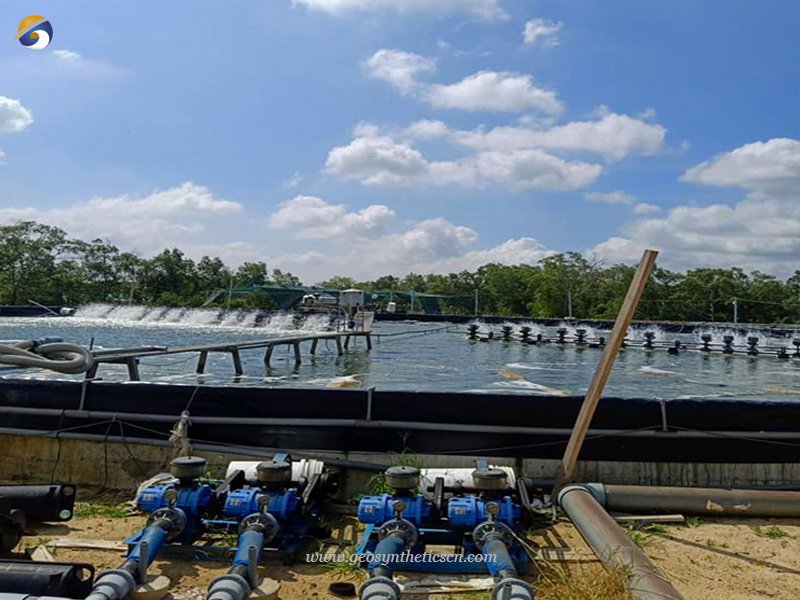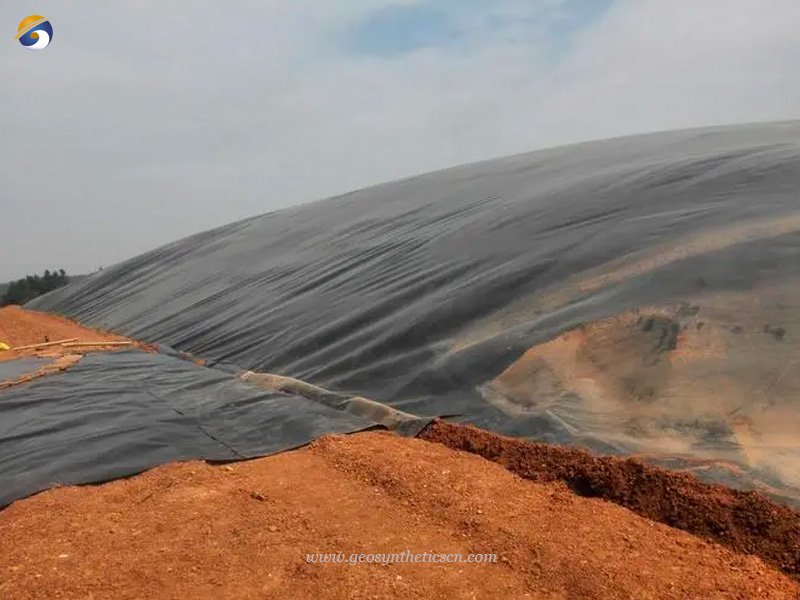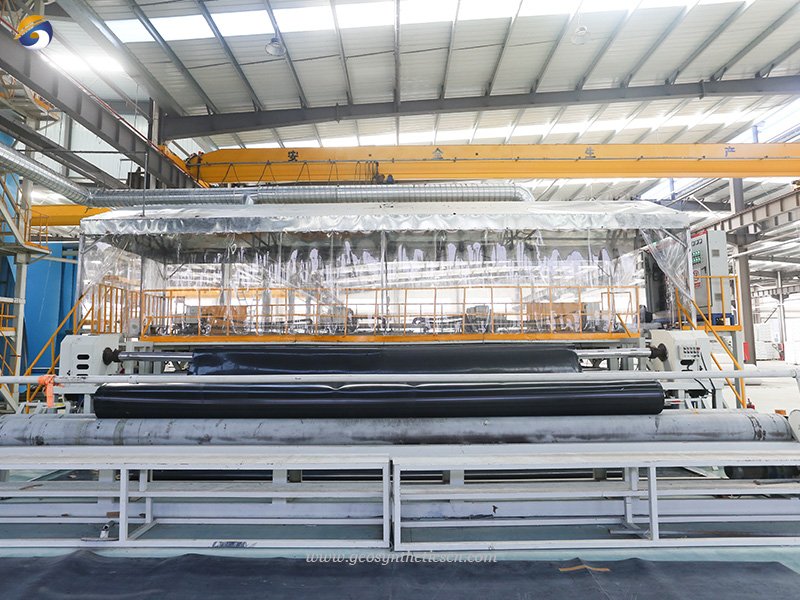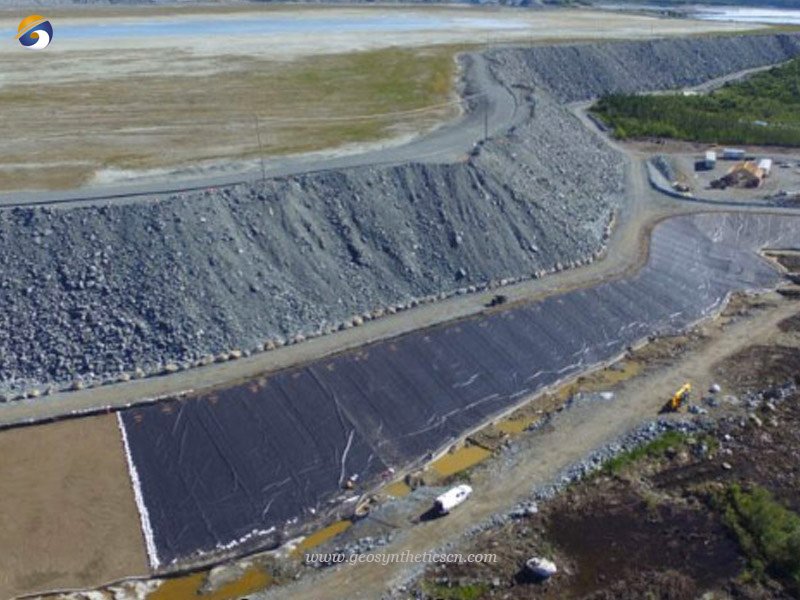In recent years, there has been a growing trend in the popularity of water or waste containment projects. To ensure the effectiveness of pond construction, it is crucial to utilize a HDPE PVC Geomembrane Liner. This choice of material helps create a containment system that effectively maintains the water level within the ponds.While people have access to alternative methods such as concrete storage ponds, these options tend to be expensive and time consuming. GEOSINCERE HDPE geomembrane material provides an effective solution for anti seepage lining ponds which is non-leakable over extended periods.
GEOSINCERE is the leading geosynthetics and geomembrane manufacturer and supplier from China. Our best geomembrane products include smooth HDPE geomembrane liner, textured geomembrane liner and composite geomembrane liner. Our standard geomembrane liner thickness is 20 mil, 30 mil, 40mil, 60 mil, 80 mil and 120 mil.
Now, more and more people believe that it is not easy to keep the water quality and prevent water leakage without geomembrans. But there are some common problems for the most first time buyers. How to select geomembrane liners? HDPE vs PVC geomembrane liner, which one is better? Why HDPE is better than PVC geomembrane for industrial ponds? How to install HDPE geomembran liner? There seems to be little difference between HDPE geomembrane liner and PVC geomembrane liner, and which one is better?
A best geomembrane liner not only stores water for prolonged periods but also prevents the accumulation of dregs, residue, waste, and detritus. In this blog, we will explore the similarities and differences of HDPE geomembrane liner and PVC geomembrane liner. Then you can can make the right choice for your aquaculture farm ponds.


1. Similarities of HDPE Geomembrane Liner and PVC Geomembrane Liner
1.1 Waterproof Properties
Both HDPE and PVC geomembrane liners possess waterproofing properties, allowing them to effectively retain water within the pond and prevent any leakage. The seal of a pond or lake is similar to the foundation of a building. Geomembrane liners are in ponds to keep water from seeping into the soil. Their working principles are forming an impermeable layer between the water and the soil which prevents water loss. As the anti seepage barrier, HDPE geomembrane liner and PVC geomembrane liner are the main geomembrane liners working on the same principle and performs the same functions.
1.2 Wide Applications
HDPE and PVC geomembrane liner are suitable for a wide range of applications. Their adaptability allows them to be utilized effectively in diverse scenarios, including fish or shrimp farm ponds, water reservoirs, swimming pools, or irrigation ponds, and more.
1.3 Installation Process
Both HDPE geomembrane liner and PVC geomembrane liner offer the advantage of easy installation, requiring minimal technical expertise. They share the similar layout process and installation method. HDPE geomembrane and PVC geomembrane liner should be welded and seamed, but they use different welding machines and sealants. You should following installation instructions.


2. Differences of HDPE Geomembrane liner vs PVC Geomembrane liner
HDPE (High-Density Polyethylene) geomembrane liners and PVC (Polyvinyl Chloride) geomembrane liners have distinct differences that make them suitable for different applications. Here are some key differences of HDPE geomembrane liner vs PVC geomembrane liner.
2.1 Raw Material Composition
HDPE geomembrane is made from high-density virgin polyethylene resin, combined with specified quantity carbon black, antioxidant, anti-aging agent and UV resistance components. While PVC geomembranes are manufactured with polyvinyl chloride. HDPE geomembrane is known for its high strength, flexibility and excellent resistance to UV radiation, and more. While PVC geomembrane liner is valued for its durability and chemical resistance. if your fish or shrimp farm ponds lie in tropical or hot climate area, choosing an HDPE geomembrane liner provides you with the better option.
2.2 Flexibility
In terms of flexibility and elongation at break, the HDPE geomembrane typically demonstrates superior characteristics when compared to the PVC geomembrane liner. This enhanced flexibility enables the HDPE geomembrane liner to better conform to irregular pond shapes and withstand ground settling.
2.3 UV Resistance
HDPE geomembrane liner offers excellent resistance to UV radiation, which helps to prolong their lifespan and maintain their integrity even when exposed to sunlight. PVC geomembrane liner may be UV stabilized but are generally more prone to degradation and discoloration when exposed to prolonged sunlight. For this property, HPDE geomembrane liner is suitable for waste landfill cover or biogas pond coverage.
2.4 Chemical Resistance
PVC geomembrane liners have superior resistance to many chemicals, making them suitable for applications where exposure to chemical substances is expected. The chemical resistance of HDPE geomembrane liner is among the best of lining materials for specific chemicals such as acids, bases, and hydrocarbons, etc. For this property, HPDE geomembrane liner is suitable for mining ore projects such as sulfate or phosphate mine.
2.5 Weldability
Thermal welding methods, such as hot air guns or extrusion welding techniques, enable the seamless and watertight joining of HDPE geomembrane liners. This welding process facilitates the creation of strong and durable bonds between liner sections. In contrast, PVC geomembrane liners can be welded using hot wedge or radiofrequency welding techniques. However, it’s important to note that PVC welding processes may be more intricate and necessitate specialized equipment.


2.6 Cost Consideration
In general, PVC geomembrane liner is more affordable compared to HDPE geomembrane liners. PVC is a widely available and cost-effective material, making it a popular choice for budget-conscious projects. HDPE is typically more expensive due to its superior strength and durability. You should balance the tow geomembrane liners considering cost and performance.
2.7 Service Life
Due to its superior durability and resistance to environmental factors, the service life of an HDPE geomembrane can be up to 50 years. It is much longer than a PVC geomembrane liner. However, it’s important to consider proper installation, regular maintenance, and other site-specific factors that can impact the longevity of both types of geomembrane liners.
2.8 Environmental Impact
HDPE geomembrane is more environmental friendly option compared to PVC geomembrane liner. HDPE is recyclable and has a lower carbon footprint during manufacturing and disposal. PVC, on the other hand, can release toxic chemicals during production and incineration.
This blog or article gives you brief similarities and differences of HDPE vs PVC geomembrane liner. Considering these differences, the choice between HDPE and PVC geomembrane liners depends on factors such as the specific application, budget, flexibility requirements, UV exposure, chemical resistance properties, service life, and environmental considerations. We are sure you know how to choose the perfect geomembrane for you projects after you read this article.
GEOSINCERE premium HDPE geomembrane is perfectly suited to aquaculture farm ponds due to its waterproof, durability and excellent resistance to UV radiation properties. GEOSINCERE also provides high quality textured geomembrane and composite geomembrane for waste containment, water containment, aquaculture, industrial project, energy project and mining project, etc.
Choosing a best geomembrane liner for lining projects? Searching for a PVC liner alternative? All we can help you and give you advice for best geomembrane order with factory price. If you have any questions or requirements, do not hesitate to contact us. Thanks for reading.





